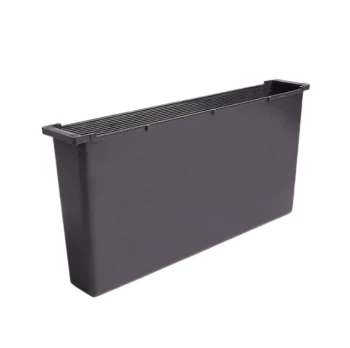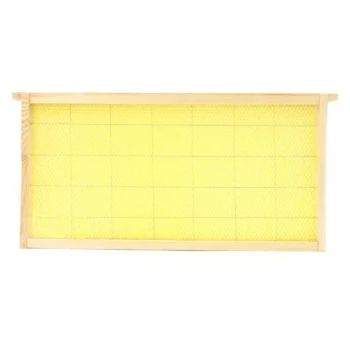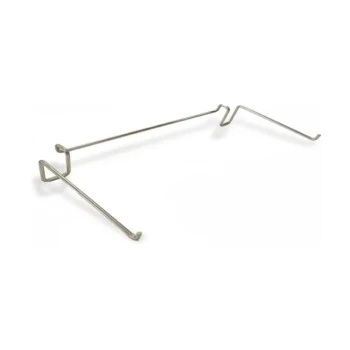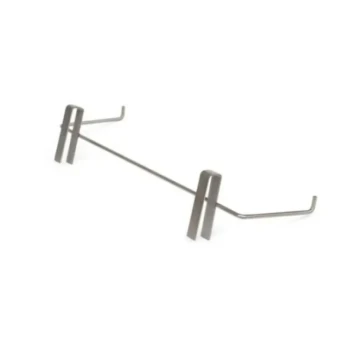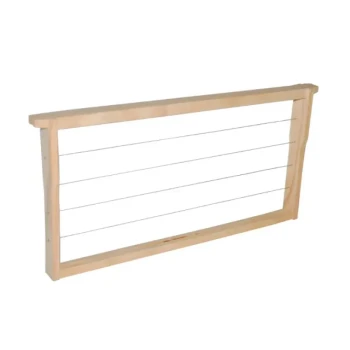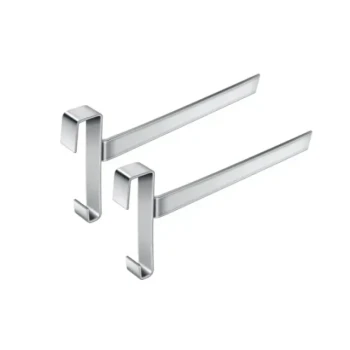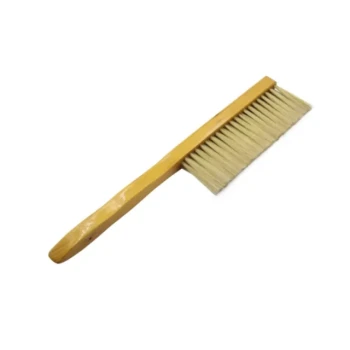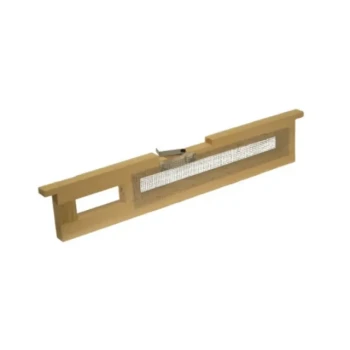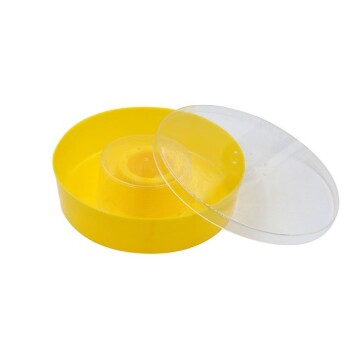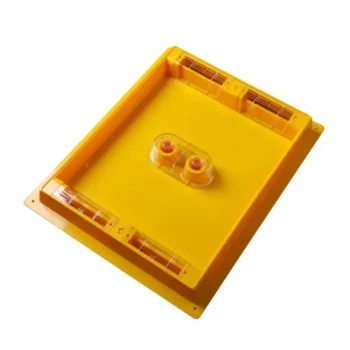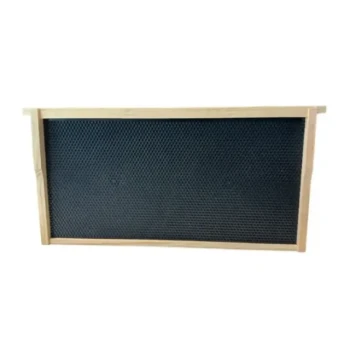In most cases, you do not need to clean the inside of Flow Hive frames if they remain on the hive. The bees are remarkably efficient at cleaning the cells themselves after a honey harvest, preparing them for the next nectar flow. However, this hands-off approach only applies to healthy, active hives.
The core principle is this: bees manage the internal cleaning of the honey cells, but the beekeeper is responsible for the overall maintenance of the frame's structure and mechanics, especially when dealing with disease, pests, or off-season storage.
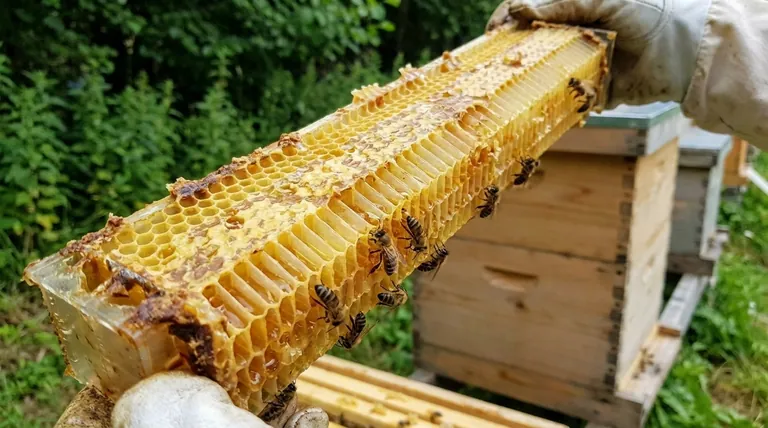
The Bee's Role vs. The Beekeeper's Role
Understanding the division of labor between you and your colony is key to proper Flow Hive management. It is not a "set-and-forget" system, but rather one that changes the nature of your tasks.
What the Bees Handle Themselves
After you drain the honey, the bees will immediately notice the empty cells. They will uncap the remaining wax, clean out any residue, and repair the cell structure, making it ready for refilling. This is the primary reason cleaning is often unnecessary.
When Human Intervention is Required
Your role as the beekeeper focuses on the health of the hive and the function of the equipment. You may need to intervene and clean the frames if you observe specific issues.
These include excessive buildup of propolis (a resinous bee glue) or burr comb that could interfere with the frame's moving parts. More critically, if you detect any signs of disease, the frames must be addressed according to local beekeeping regulations, which often involves cleaning and sterilization.
Key Maintenance for Flow Frames
A Flow Hive simplifies honey extraction, but it does not eliminate the need for fundamental beekeeping practices. Regular maintenance is essential for a thriving colony.
Regular Hive Inspections
Like any beehive, a Flow Hive requires regular inspections, typically every 7 to 14 days. This involves opening the hive and inspecting the brood box to check on the queen's health, look for pests, and monitor the colony's growth.
During these checks, you should also inspect the Flow Frames for any damage or unusual buildup.
Removing Propolis and Wax
Bees naturally use propolis to seal gaps. Over time, this can accumulate on the Flow Frame mechanism. After a harvest, it's good practice to inspect the frames for any buildup that might jam the opening and closing action. A simple scraping tool can be used to remove it.
Preparing Frames for Storage
If you remove your Flow Super for the winter or off-season, this is when a thorough cleaning is most important. Frames stored with honey residue can attract pests like wax moths and ants. They should be cleaned of all wax and propolis and stored in a dry, well-ventilated location.
Understanding the Trade-offs and Risks
The convenience of the Flow Hive system comes with its own unique set of responsibilities and potential pitfalls.
The Myth of "No-Maintenance" Beekeeping
The biggest misconception is that a Flow Hive requires no work. It simplifies one task—honey extraction—but the fundamental duties of hive management, pest control, and health inspections remain exactly the same as with a traditional hive.
The Risk of Neglecting Inspections
Because you don't have to open the honey super to harvest, it can be tempting to inspect the hive less frequently. This is a significant risk. Neglecting regular brood box inspections means you could miss early signs of disease, pests like Varroa mites, or a failing queen, which could lead to the loss of the entire colony.
Potential for Mechanical Issues
The Flow Frame is a mechanical device. Propolis or stray wax can gum up the works, preventing the cells from opening or closing correctly. Regular inspection and light cleaning ensure the mechanism functions as designed when it's time to harvest.
A Practical Checklist for Your Frames
Your approach to frame maintenance should be dictated by your specific goal at the time.
- If your primary focus is routine, in-hive maintenance: Trust your bees to clean the cells, but continue with regular hive inspections every 1-2 weeks to monitor for problems.
- If your primary focus is preparing frames for off-season storage: You must perform a thorough cleaning to remove all wax and propolis to prevent mold and pest infestations.
- If your primary focus is responding to a detected disease: Immediately consult with experienced local beekeepers or agricultural extension services for disease-specific protocols, which will supersede any standard cleaning advice.
Proper frame maintenance is about proactive observation, not just reactive cleaning, ensuring the health of both your colony and your equipment.
Summary Table:
| Situation | Cleaning Required? | Key Action |
|---|---|---|
| Frames on a Healthy Hive | No | Bees clean cells after harvest; focus on regular hive inspections. |
| Excessive Propolis/Burr Comb | Yes | Scrape buildup to ensure mechanism functions properly. |
| Detected Disease | Yes | Follow local regulations for cleaning and sterilization. |
| Preparing for Off-Season Storage | Yes | Thoroughly clean to prevent pests and mold. |
Ensure your apiary's success with professional-grade equipment from HONESTBEE.
Our wholesale-focused operations supply commercial apiaries and beekeeping equipment distributors with the durable, reliable supplies needed for efficient, large-scale beekeeping. From hive components to extraction tools, we provide the foundation for healthy colonies and productive harvests.
Contact our team today to discuss your wholesale needs and discover how HONESTBEE can support your business growth.
Visual Guide
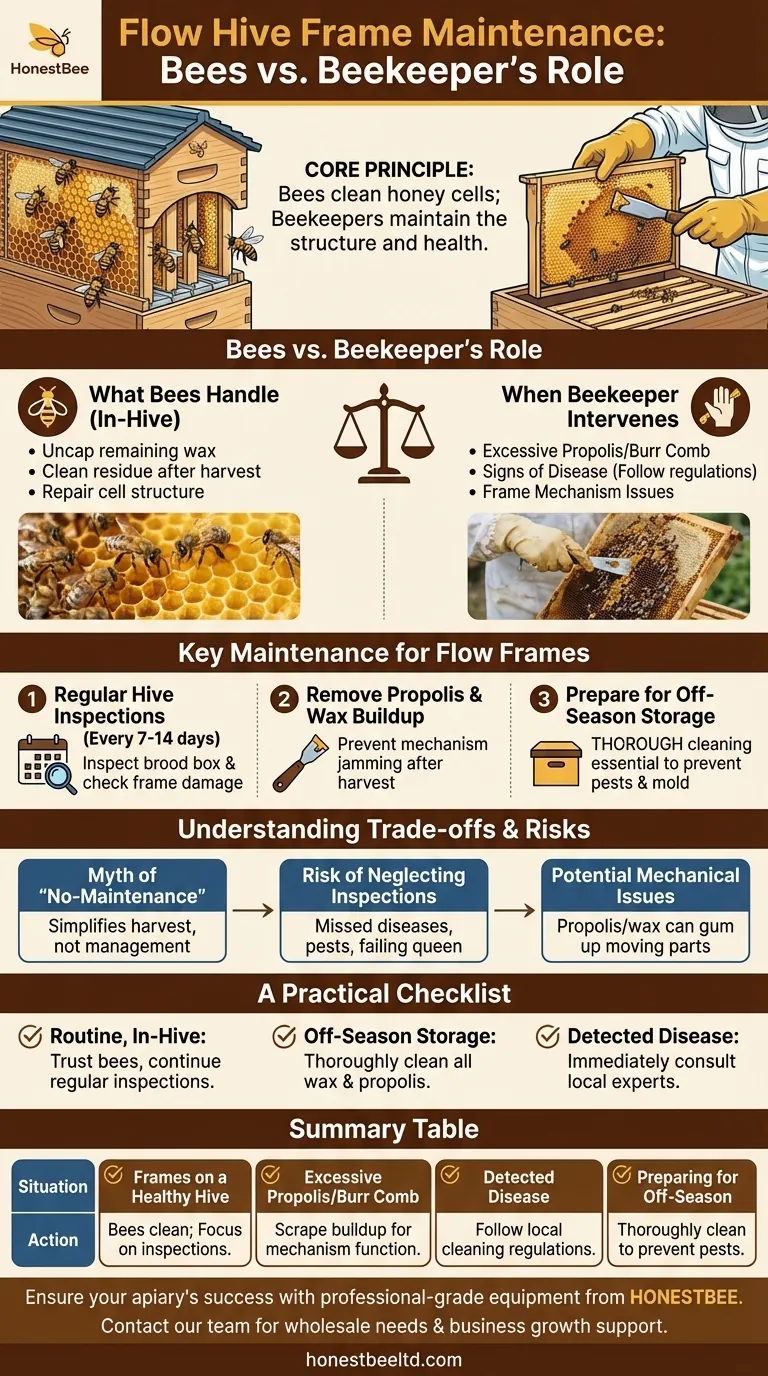
Related Products
- 7 x Auto Bee Flow Hive Frames Plastic Beekeeping Hive Box Supplies
- Professional In-Hive Bee Feeder HONESTBEE Frame for Beekeeping
- Assembled Wooden Bee Frames with Beeswax Foundation Ready to Use by HONESTBEE
- 3.5L Plastic Beehive Frame Feeder Deep Frame Water Feeder for In Hive Use
- Heavy-Duty Stainless Steel Frame Perch
People Also Ask
- What is the selling point of the Flow Hive? A Revolutionary, Stress-Free Honey Harvest
- What do bees do after the comb is reset in Flow Frames? Maximize Your Hive's Honey Production Efficiency
- What is the role of oxalic acid in plants? A Key to Plant Defense and Internal Regulation
- How long does it take for bees to fill a Flow Hive? A Guide to Realistic Timelines
- What are Flow Frames and how do they work? A Gentle Way to Harvest Honey

